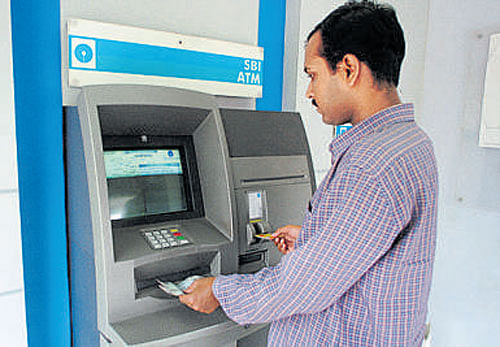
As citizens of the digital world, whether it’s a customer withdrawing cash at an ATM or a Point of Sale (PoS) machine being utilised in restaurants and retail stores, the user is inadvertently always at risk.
There has been an unprecedented spike in the rate of ATM frauds of late, because of which innocent customers are caught unaware. In these past months itself we have witnessed multiple cases of ATM frauds sweeping the nation.
Over 20 years since the first known instance of ATM fraud came to light back in 1993, we are still grappling with the same problem in different variations, the most recent one being in India where 3.2 million debit cards were compromised due to an ATM malware infection.
As regulatory and nationalised payment bodies’ state that all fraudulent activities are being tracked and necessary measures are being dealt with, speculation is still rampant in consumers’ mind in terms of reliability and safety. The advancement in technology is turning out to be quite a double-edged sword. On one hand, it helps us conceive better security measures, while at the same time it equips the perpetrators with newer ways to scam people. Despite having various security measures in place, criminals are still succeeding in stealing money effortlessly.
Vicious circle of ATM frauds
These occurrences have shifted the spotlight on to security of ATMs, and vigilant usage of ATM cards. ATMs provide the utmost convenience for withdrawing or depositing money.
The fact that there is an ATM situated at every kilometer makes it even more accessible.
Customers often tend to not pay attention while swiping cards as they are in a hurry and fall victim to one of the most common cause of ATM fraud – skimming. Bankers and experts believe that globally, skimming and cloning are the top forms of ATM fraud. Last year, millions were stolen through skimming.
The fraudsters install a card reader in the slot wherein the customer inserts the ATM card, and it mimics the card slot, serving the purpose of extracting all the vital information from the magnetic strip on the card.
The perpetrator transfers this information on to a duplicate card which they use to make unauthorised transactions sans the knowledge of the owner.
The perpetrators also install fake keypads and camera to gain access to the original user’s PIN number.
Data theft is another favourite of ATM fraudsters wherein they target the PoS terminals and open ATM installations. They either distract the customer post entering the PIN or shoulder surf them. They also employ the Lebanese Loop by trapping the card or money inside the machine, thus frustrating the actual user leading to a walkout. Perhaps the most effective manner of data theft occurs when the fraudster poses as personnel of the bank and tricks the customer into divulging details like the PIN number.
Banks don’t call customers
Banks send out regular alerts to customers, requesting them to keep changing their ATM pins. Time and again they have reaffirmed the fact that banks don’t call customers asking for card details and PIN.
Any time such a call is received, the bank should be alerted about the possible attempt of data theft. The criminals aren’t people with half-baked knowledge. They are skilled users of the technology that’s used, and know their way around any limitations. It’s imperative that as frequent visitors of the ATM, we ensure our own security. Keep an eye out for any unusual device or tampering on the ATM card slot.
It is always preferable to use an ATM kiosk inside a bank rather than one in a dimly lit area or with poor accessibility. In case the card is stuck in the ATM or money hasn’t been dispensed, it is advisable to take help from the appointed security personnel or call the bank rather than seeking assistance from strangers.
The Reserve Bank of India (RBI) is working actively towards curbing these instances of frauds and cyber security threats. In these times of digital payments, it is crucial that the governing bodies have stringent measures in place to avoid future frauds.
The first step towards safeguarding your money is understanding that security isn’t the sole responsibility of the banks. It should be a joint effort undertaken to defeat the evolving tech-savvy schemes of criminals. Banks should collaborate to tighten the security framework and adopt state-of-the-art, fully encrypted ATM security solutions to safeguard consumers.
As an ATM user, we must get into the practice of exhibiting a greater level of vigilance. In case of online banking, users should always access their accounts from up-to-date systems via secure networks and log out once finished. It is important to monitor your transactions to detect any anomalies, and regularly change your PIN to restrict misuse and data theft.
The bottom line is that until the day when every payment card includes an embedded chip on the front side and excludes a magnetic stripe on the back, including EMV chip cards, they can be compromised.
(The writer is President, Banking Relation at Electronic Payment and Services)